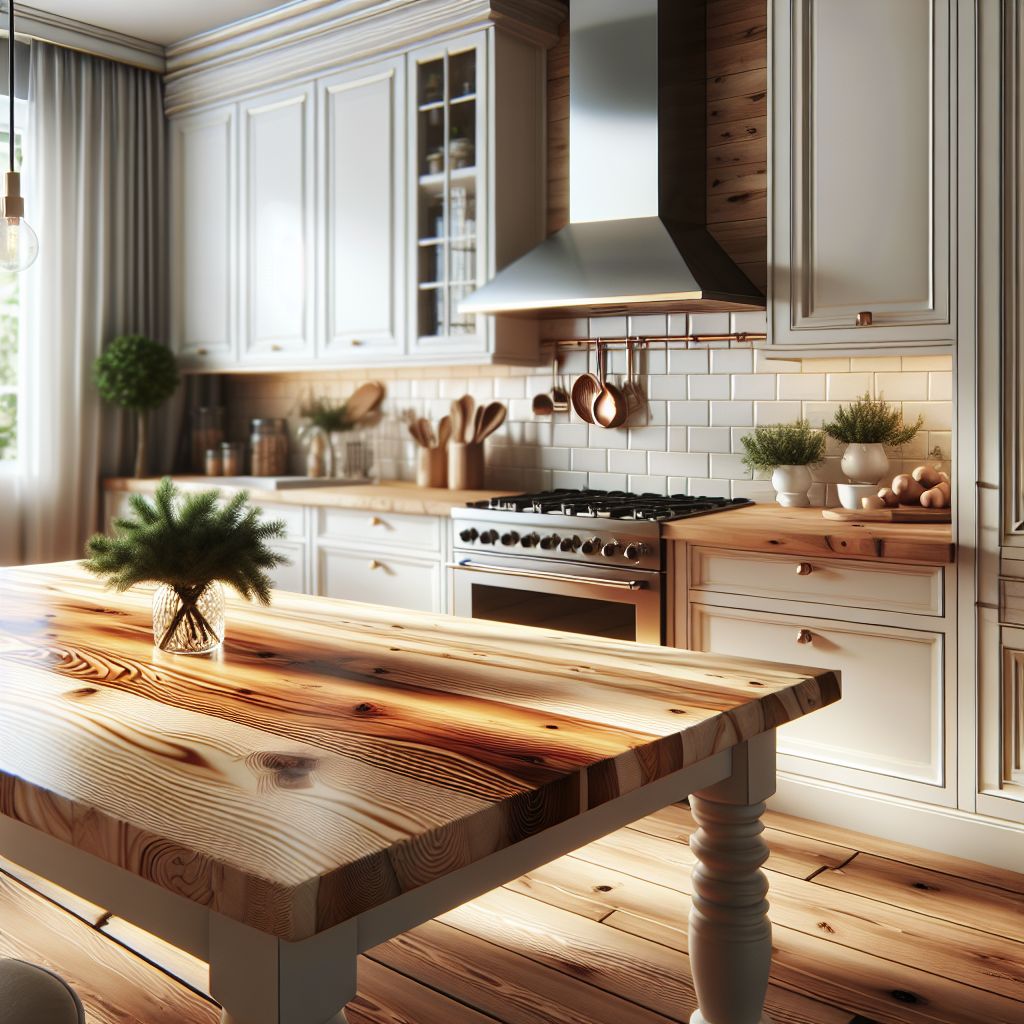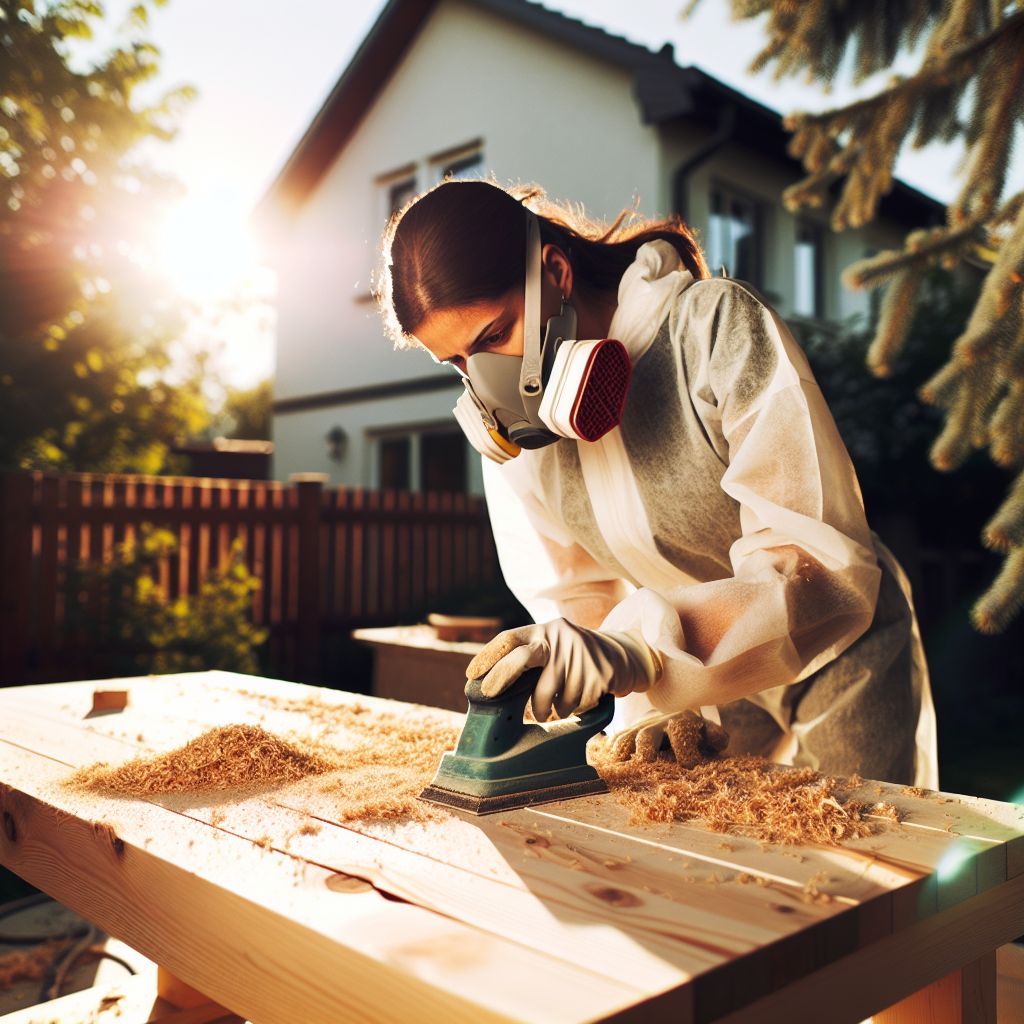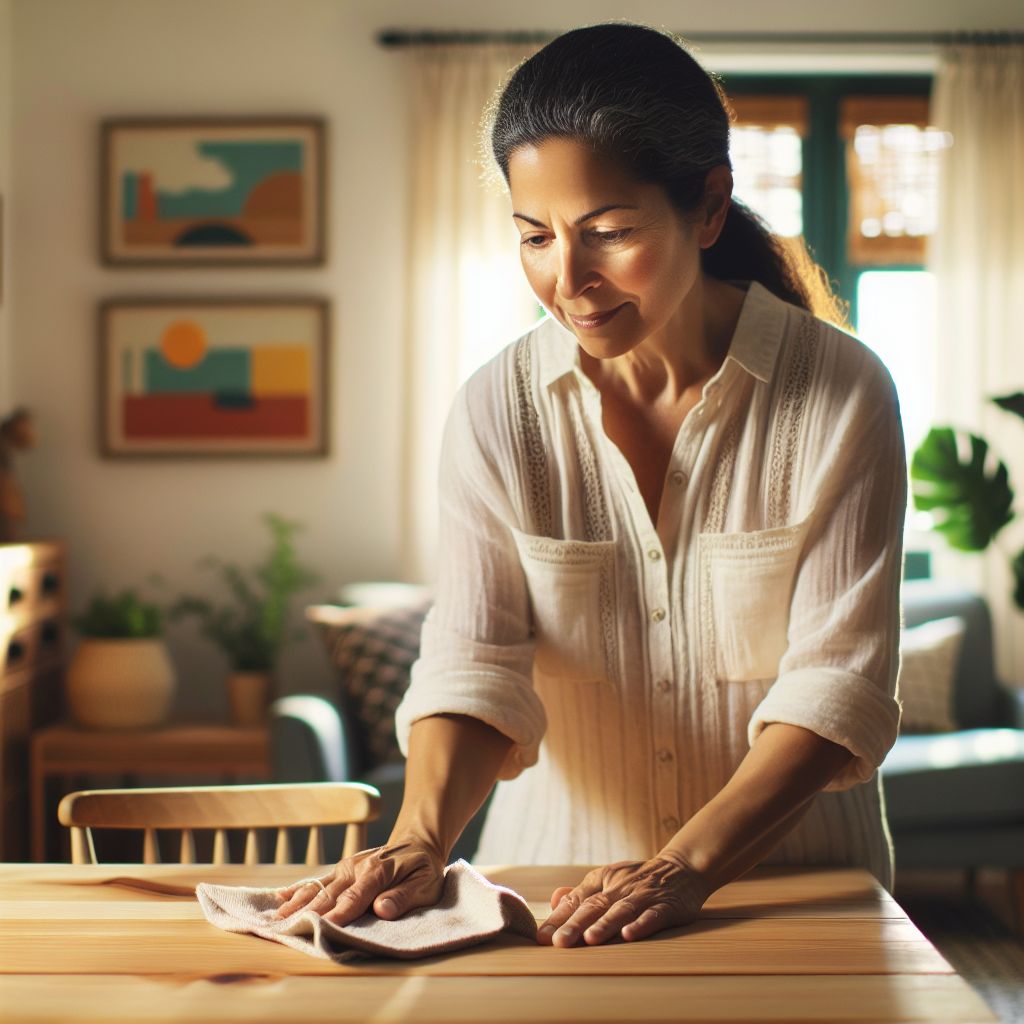
Key Takeaways
- Refinishing a pine table can be a rewarding DIY project that enhances your home decor.
- Proper preparation, including gathering materials and setting up your workspace, is essential for success.
- Stripping the old finish is the first step, and it can be done through sanding or chemical strippers.
- Sanding the wood is essential for a smooth surface, and selecting the right sandpaper grit is key.
- Applying stain and finish not only beautifies the table but also protects it for everyday use.
Embarking on Your Pine Table Refinishing Journey
Refinishing your pine table is more than just a weekend project; it’s a journey into the world of craftsmanship and attention to detail. It’s about taking something with history and character and adding your personal touch. Whether your table is a garage sale find or a family heirloom, it deserves to be shown off in its best light.
Gathering Your Materials
Before we dive into the process, let’s make sure you have everything you need. Here’s a quick list:
- Safety goggles and gloves
- Dust mask or respirator
- Chemical paint stripper (if you’re not just sanding)
- Scraper and steel wool
- Sanding paper (various grits from coarse to fine)
- Tack cloth or a damp rag
- Wood stain of your choice
- Polyurethane or another protective finish
- Quality brushes or a foam applicator
Having these items at hand will ensure a smooth start to your refinishing project.
Understanding the Basics of Pine Wood
Before we start working on the table, let’s talk about pine. Pine is a softwood, which means it’s more susceptible to dents and scratches. This characteristic makes it important to handle pine with care during the refinishing process. On the upside, pine is also known for its beautiful grain patterns, which can really shine through with the right finish.
Preparing Your Workspace
First things first, find a well-ventilated area where you can work comfortably and safely. Whether it’s your garage, shed, or a covered outdoor space, proper ventilation is key, especially when working with chemicals. Make sure the space is free from dust and debris to prevent imperfections in your finish. Set up your tools and materials within easy reach to keep the workflow smooth. Don’t forget to protect the floor and surrounding areas with drop cloths or old newspapers to catch any spills or splatters.
Choosing the Right Environment
Temperature and humidity can affect how your refinishing products work. Aim for a moderate environment; too much humidity can slow drying times, while too little can cause the wood to dry out too quickly.
Ensuring Safety and Cleanliness
When handling chemicals or sanding, always wear your safety gear. A dust mask or respirator will keep you from inhaling particles, and gloves will protect your hands from harsh chemicals. Keep your workspace clean as you go to prevent any mishaps or unnecessary cleanups later.

Pine Table Refinishing Steps
Now, onto the main event. Follow these steps, and you’ll be admiring your refinished pine table in no time.
Step 1: Assessment and Preparation
Inspect the table for any damage, scratches, or imperfections. Decide whether you want to repair any damage before proceeding. Clear the table of any objects and protect the surrounding area with drop cloths or newspapers.
Step 2: Stripping Down: Removing the Old Finish
If your table has a previous finish or paint, it’s got to go. You can either sand it off or use a chemical stripper. Sanding is straightforward but requires muscle and patience, while chemical strippers can be messier but take off layers with less effort.
For sanding, begin with a coarse grit sandpaper to strip away the old finish, then progressively move to a finer grit to achieve a smooth surface. If opting for a chemical stripper, follow the manufacturer’s instructions closely, ensuring an even application. Once the chemical has had time to work, use a scraper to gently remove the old finish, being cautious not to damage the underlying surface.
Remember, this step sets the stage for everything that follows, so take your time and do it right.
Step 3: Sanding
Sand the entire surface of the table to remove any remaining finish, smooth out imperfections, and prepare the wood for the new finish. Start with coarse-grit sandpaper and gradually move to finer grits for a smooth finish. Wipe away dust with a tack cloth or damp rag between sanding stages.
Selecting the Right Sandpaper Grit
When it comes to sanding your pine table, choosing the right sandpaper grit is important. Start with a coarser grit to remove any old finish or blemishes; something around 80 to 100 grit should do the trick. Once the old finish is off and the surface is even, switch to a finer grit, like 150, then finish with a very fine grit, such as 220, to create a smooth surface that’s ready for staining.
Here’s a simple way to remember: rough grit makes it smooth, fine grit makes it silky.
It’s a bit like sculpting; start with the big chisel and finish with the fine sanding paper. And always sand in the direction of the grain to avoid scratches that can show up later when you apply the stain and finish.
Sanding Techniques to Avoid Damage
Because pine is a softwood, it’s important to sand gently to avoid creating divots or gouges in the wood. Use a sanding block for flat surfaces to distribute pressure evenly. For curved or detailed areas, wrap a piece of sandpaper around your finger or use a foam sanding pad that can conform to the shape. And remember, patience is key; let the sandpaper do the work rather than using brute force.
Step 4: Repairing Damages (if necessary)
If your pine table has any damages, now is the time to address them. Start by thoroughly inspecting its surface for cracks, gouges, or holes. Use a wood filler that matches the table’s color, slightly overfilling the imperfections to accommodate for shrinkage. Push the filler firmly into the damaged areas with a putty knife, ensuring full coverage.
Once the wood filler has dried, sand the filled areas with medium-grit sandpaper to smooth the surface, following the direction of the wood grain. Finish with a finer grit for a polished look. After sanding, wipe down the table to remove dust, creating a pristine surface for staining or sealing. Proper filling and sanding will enhance the table’s appearance and longevity.
Step 5: Staining Your Pine Table Like a Pro
Staining is where the magic happens. It’s where you get to enhance the natural beauty of the wood and give it a new color that fits your style. But before you start, test the stain on a hidden part of the table or a scrap piece of pine to make sure it’s the color you want.
Once you’re happy with your choice, apply the stain with a brush or a clean rag, working it into the wood in the direction of the grain. Then, wipe away any excess stain to avoid blotchiness. Depending on the product, you may need one or more coats to achieve the desired color.
Picking the Perfect Stain for Pine
Pine can be tricky to stain evenly because of its porous nature. To avoid a blotchy finish, use a pre-stain wood conditioner. This will help the wood absorb the stain more evenly, resulting in a more uniform color. When selecting your stain, consider whether you want an oil-based or water-based product. Oil-based stains penetrate deeper and take longer to dry, but they often provide a richer color. Water-based stains dry faster and are easier to clean up.
As for color, it’s all about personal preference. Pine takes well to a range of stains, from light, natural tones that highlight its grain to dark, dramatic hues that add a sense of richness and depth.
Keep in mind that the end color will be affected by the original color of the wood, so what you see on the can may not be exactly what you get on your table. That’s why testing is so important.
The Staining Process: Step-by-Step
Let’s break down the staining process into simple steps:
- Start by applying the pre-stain wood conditioner. Follow the instructions on the can for application and drying times.
- Stir the stain thoroughly before use. Never shake a can of stain; it can create bubbles that might end up on your wood surface.
- Using a brush or rag, apply the stain in the direction of the grain. Work in manageable sections so it doesn’t dry out before you can wipe off the excess.
- Wait a few minutes, then wipe the surface with a clean cloth to remove excess stain. The longer you leave it before wiping, the darker the color will be.
- Allow the stain to dry completely. This can take anywhere from a few hours to overnight, depending on the product and the conditions in your workspace.
- If you want a darker color, you can apply a second coat after the first one has dried completely. Just remember to wipe off the excess each time.
Step 6: Applying the Finish for Durability and Shine
Now that your table is stained to perfection, it’s time to protect it. A good finish will shield your table from scratches, spills, and the wear and tear of daily life. It also adds that final touch of sheen that makes the wood look truly finished.
Consider your lifestyle and how much wear your table will get when choosing a finish. A dining table might need a more durable finish than a side table that’s more for show.
Tips for Applying the Finish
When applying the finish, work in a clean, dust-free environment. Use a high-quality brush or foam applicator to apply the finish smoothly and evenly. Apply in thin coats to avoid drips or brush marks, and allow each coat to dry completely before applying the next one.
- Apply the first coat of finish and let it dry. Sand lightly with a very fine grit sandpaper to smooth out any bumps or imperfections.
- Remove all sanding dust with a tack cloth or a damp rag.
- Apply a second coat of finish. If desired, sand again before the final coat for an ultra-smooth surface.
For a professional-looking finish, it’s all about technique. Remember to always stir your finish gently before use to mix in any settled particles without creating bubbles. If .you notice a run or drip, smooth it out immediately with your brush or applicator.
After the final coat, give your table plenty of time to cure. This can take a few days, so be patient. It’s worth the wait for a durable and beautiful finish.

Caring for Your Pine Wood Table
Caring for your pine wood table is essential to ensure its longevity and maintain its natural beauty over time. From everyday cleaning to protection against scratches and moisture damage, proper maintenance practices can significantly extend the life of your table and keep it looking its best for years to come.
Everyday Care Tips
Once your pine table is beautifully refinished, you’ll want to keep it looking its best. Regular maintenance will preserve its shine and extend its life. Here are some simple yet effective tips for everyday care:
- Keep your table clean by wiping it down with a soft, damp cloth.
- Avoid harsh chemicals or abrasive cleaners that can damage the finish.
- Use coasters and placemats to protect the surface from heat and moisture, which can cause the wood to warp or the finish to lift.
- If you spill anything, wipe it up quickly to prevent stains.
Long-Term Maintenance Strategies
Over time, your table may start to show signs of wear. To keep it looking fresh, you can apply a fresh coat of finish every few years. This will not only renew the look of the table but also provide continued protection against everyday wear and tear. If you notice any scratches or dents, you can usually fix them with a bit of sanding and touch-up staining.

Frequently Asked Questions
How long should I let the stain dry before applying a finish?
It’s important to let the stain dry completely before applying a finish, which typically takes about 24 hours. However, drying times can vary based on the type of stain, the humidity, and the temperature of your workspace. Check the manufacturer’s recommendations for the best results.
Can I refinish a pine table without stripping the old paint?
If the existing paint is in good condition and you want to paint over it, you may not need to strip it. However, you should still sand the surface to ensure the new paint adheres well. If you’re looking to stain the table, you’ll need to remove the paint to expose the bare wood.
What is the best finish to use on a pine table used daily?
For a pine table that sees daily use, a polyurethane finish is a great choice because it’s durable and water-resistant. It comes in various sheens, from matte to high gloss, so you can choose the look that best fits your style. Water-based polyurethane is less likely to yellow over time and has a quicker drying time than oil-based options.
How can I repair deep scratches on my pine table’s surface?
For deep scratches, start by cleaning the area thoroughly. Then, use a wood filler that matches the color of your table to fill the scratch. Once the filler is dry, sand it down until it’s flush with the table surface. Finally, touch up the area with a bit of stain and finish to blend it with the rest of the table.
Is it necessary to sand between layers of finish?
Sanding lightly between coats of finish with a fine-grit sandpaper is recommended. This helps create a smooth surface by knocking down any raised grain or dust nibs that have settled into the wet finish. Always clean off the sanding dust before applying the next coat for the best results.
By following these steps and tips, you’ll be able to take pride in a beautifully refinished pine table that can stand the test of time. Remember, the effort you put into this project not only restores a piece of furniture but also creates a lasting memory of your craftsmanship. Enjoy your refinished masterpiece and the many meals, conversations, and moments that will be shared around it.





Leave a Reply